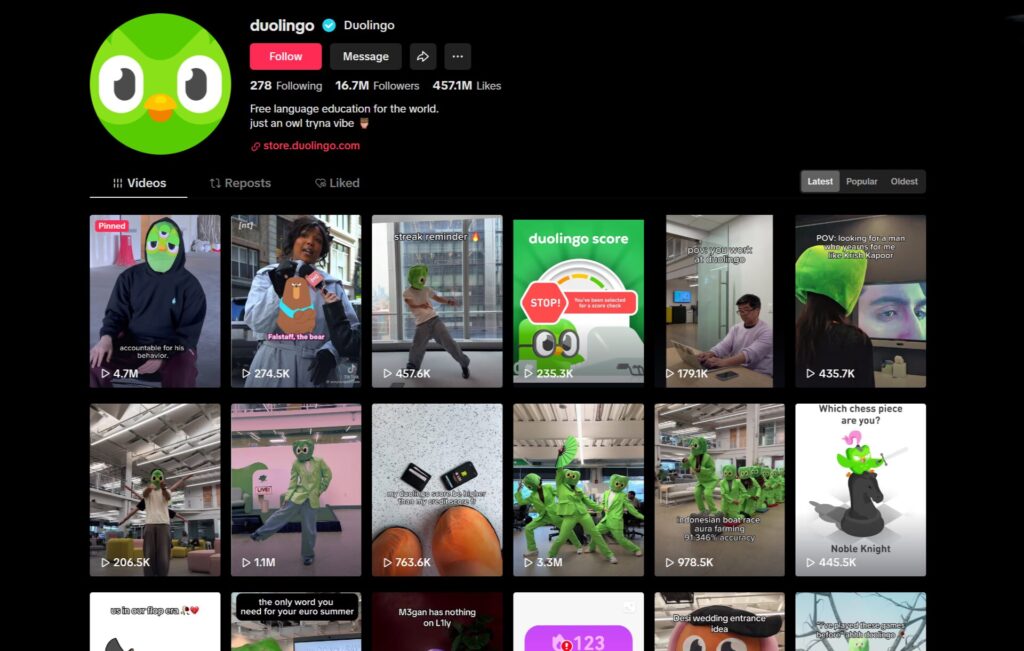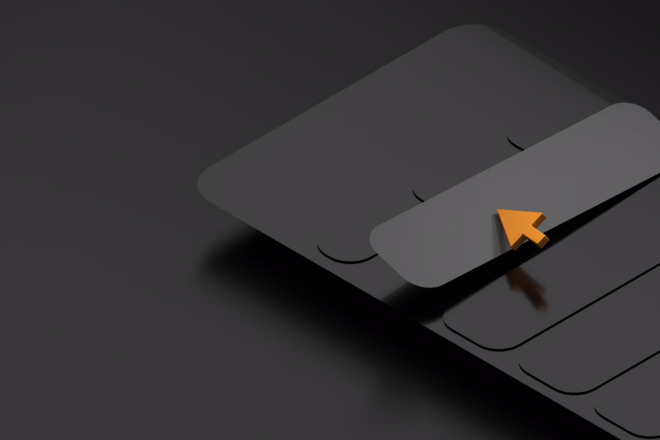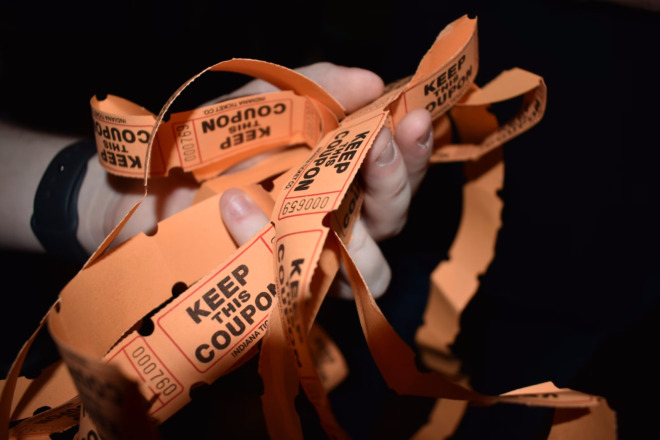Duolingo has become an AI-first company, meaning it is off-boarding contractors and embracing automation to create lessons faster. The decision generated immediate backlash. Now that it has had time to respond and social media has had time to move on, professionals can see if the brand’s big bet paid off.
Duolingo Announces It Will Be AI-First
In April 2025, Duolingo took to LinkedIn to announce it was going AI-first. In an all-hands email, cofounder and CEO Luis von Ahn explicitly clarified the same. This move comes roughly 1.5 years after it off-boarded 10% of its contractors, citing AI as one of the reasons. This decision will fundamentally change the company’s strategy moving forward.
Duolingo is now officially an AI-first business, meaning it will rebuild established workflows from the ground up, baking AI into its core instead of finding somewhere to include it in existing processes. Since automation is a cornerstone of this technology, the workforce will shift dramatically.
Luis von Ahn stated Duolingo cares deeply about its employees and the change isn’t about replacing “Duos” with AI. However, one of the core guiding principles he listed involves gradually phasing out all contractors whose work can be handled by AI.

This statement sparked controversy because it hit home — many people worry about being replaced by AI. A 2025 Pew Research Center study revealed 52% of working adults worry about its impact on their jobs. Others were frustrated with the decision because of its lack of oversight and adverse environmental effects.
Despite being so new, AI has faced numerous controversies. It has started debates about art theft, data security, algorithmic bias and poor quality.
For Duolingo, an AI-first strategy may be less about delivering high-quality lessons to end users and more about setting trends and satisfying stakeholders. In the now-infamous all-hands email, Luis von Ahn said itt would rather “move with urgency” and take hits on quality than take their time and “miss the moment.”
How It Handled the Immediate Backlash
A lot has happened in the 90 days since Duolingo’s fateful AI-first announcement. At the end of May, it removed all videos from its TikTok account, which has amassed nearly 6.7 million followers due to its eccentric, personality-driven style. Its bio simply read “gonefornow123,” followed by three eye emojis.
It pulled this unorthodox marketing move after users flooded its social media accounts with angry comments. Over email, a spokesperson told Fast Company it was experimenting with silence, trying to “make noise” by disappearing for a while.
After a few days of inactivity, it posted a TikTok with the caption, “DUOLINGO WAS NEVER FUNNY. WE WERE.” Duo — the company’s official mascot — swapped his signature green owl suit for a black hoodie and a mask with three eyes. He complained about CEOs and those in power, lamenting “one single post” about AI had destroyed the marketing team’s hard work.
The TikTok was not received well. The idea was that the mascot had opened his third eye — a metaphor for enlightenment or heightened awareness. While making light of conspiracy theories could be a fun way to engage audiences, the video came across as mocking, tone deaf and unserious. It received 7.8 million views but under 500,000 likes.
Duolingo’s CEO Does Damage Control
Days after the first TikTok post, the marketing team posted an interview between Duo and CEO Luis von Ahn. The background resembled an abandoned warehouse or high-rise, reminiscent of high-stakes action movie interrogations. It had all the makings for an interesting video, but ultimately fell flat, receiving 4.7 million views but just over 162,600 likes.
Duo asked how people can tell whether Duolingo is making false promises, noting that employees could get “shuffled out” as soon as the media fire dies down. “Honestly, I don’t really know what’s going to happen,” the CEO responded.
The choice to frame Duo as a “woke” conspiracy theorist while parroting resounding concerns was an attempt to be relatable. Even though the CEO’s answers were not entirely transparent, the questions seemed to be in good faith. However, some felt the brand was punching down.
The top comments encapsulate the public’s reaction. TikTok user Devn received 59,000 likes for stating, “Duolingo acting like he’s one of us 💔,” while @nomoregorgio secured one of the top comments with “We can meme our way out,” mocking the company for sticking to its usual tone when addressing a serious topic.
Is Duolingo’s Big Bet Paying off or Not?
In the LinkedIn post that started it all, the CEO referenced its 2012 decision to bet on a mobile-first strategy — a move that has paid off. Analysis suggests the Duolingo AI-first strategy could be similarly effective.
For one, its stock price did not take a hit. In fact, it increased, indicating investors were pleased. On August 1, 2025, Duolingo’s closing price was $370.34 —- up from $212.57 year over year (YoY). It did not drop considerably in the months following Duolingo’s AI-first backlash. In May, its closing price was over $500.
Social media comments may make it seem like the public is turning against the green owl, but the business is not suffering. The marketing team has spent years carefully crafting its image, and one bout of outrage will not destroy its brand perception. Moreover, the app incentivizes loyalty through streaks, paid accounts and in-app features. Many users are unwilling to abandon months of progress or throw away the money they spent on an annual subscription. Even those who have yet to convert may not be swayed.
To say the language learning market has room to grow is an understatement. In the United States, over 75% of the population only speaks English. Spanish is the second most common, with 13% of people speaking it at home. In this country alone, Duolingo has hundreds of millions of people to market to — many of whom do not mind AI. Even if public sentiment ultimately shifts, its bottom line has not — at least in the first 90 days — which proves its big bet was worth it.
It Is Business As Usual on Social Media
That being said, a quick scan of the TikTok page reveals Duolingo used to get millions, even tens of millions of views per video. With few exceptions, the posts uploaded in May and June have struggled to reach even 1 million views. The top comments are almost always about AI. The marketing team is likely looking to move past the debacle by continuing business as usual.
In today’s fast-moving digital world, there’s too much to focus on for people to form picket lines protesting Duolingo’s AI-first approach. After the one attempt to quell outrage on TikTok, the brand continued posting funny, strange TikToks like usual. It even reuploaded its old videos, deemphasizing the poorly received third-eye videos.

The interview with Luis von Ahn is pinned on Instagram and TikTok. In the preview, “The Truth” is clearly visible in bright, bold letters. The marketing team is doing damage control by minimizing the attention on the recent controversy while making its stance very clear.
This way, curious social media users will not fall prey to misinformation. This move may not have been received well, but it is a solid long-term strategy. In time, after the media fire dies down, the marketing professionals will likely unpin the post.
Did the AI-First Fumble Impact the App?
The backlash has been mostly isolated to social media. App engagement has not changed drastically in the 90 days following Duolingo’s AI-first announcement.
The business revealed its active user count in a quarterly SEC filing, which it measured from April 2025 to June 2025 — the perfect time frame to see the short-term effects of the backlash. Even though its comments are flooded with frustrated users to this day, its daily active users averaged 47.7 million, which is up 40% YoY. Monthly active users hit 128.3 million — up 24% YoY.
On June 30, 2025, its paid subscriber count was 10.9 million, while June 2024 had 8 million. It is making more money and seeing more engagement than ever before. Introducing new features and higher subscription tiers has insulated it against worse short-term damage.
Lessons Learned from Duolingo’s Blunder
Many businesses are exploring AI. Across 35 countries, nine in 10 marketing professionals have adopted it to automate customer interactions. It is a versatile tool, making it ideal for everything from coding to generating marketing ideas. However, Duolingo’s AI-first backlash raises questions about its place in marketing.
In this case, many feel it does not belong. Language is innately human and deeply rooted in emotion, tone, culture, and trends, not just semantics. Does every industry need to adopt machine learning technology? Where should professionals draw the line?
While Duolingo has not yet announced plans to replace its content creation team with generative technology, that approach may not be out of the question. Globally, experts project AI marketing revenue will reach $107 billion in 2028 from an estimated $47 billion in 2025.
Many are AI-averse, calling the content “slop” and “lazy.” Their feelings likely stem from ethical concerns about stolen intellectual property used during training. Despite this, it is continuing to trend. Small business owners have a choice — they can join their competitors and risk backlash or play it safe and wait to invest.
This massive, multimillion-dollar enterprise was insulated against the worst outcome since it has long been the golden child of marketing, beloved by audiences on multiple platforms. Decision-makers planning to implement this solution should reevaluate their strategies with these insights in mind. They should consider using a more serious tone to address concerns, providing metrics to prove they will follow through with their promises and finding a way to offset the negative impacts of use.
Duolingo’s AI-First Bet Could Still Flop
Small businesses should navigate this complex issue carefully. The top comments on Duolingo’s TikToks provide a taste of public sentiment. Consumers who strongly identify with a brand personality may be more AI-averse. Many cannot imagine a world where these two seemingly contradictory concepts coexist.
Stakeholders are happy about AI because it promises a greater return on investment. However, managing public perception is complicated. Even if the stock price, social media following, user engagement rate and paid subscriber count look good now, they may take a downward turn. Users may be wrapping up lessons and waiting until their paid subscriptions time out to delete the app. At the very least, Duolingo’s AI-first controversy could serve as the final straw, giving some people a reason to look for alternative apps.


